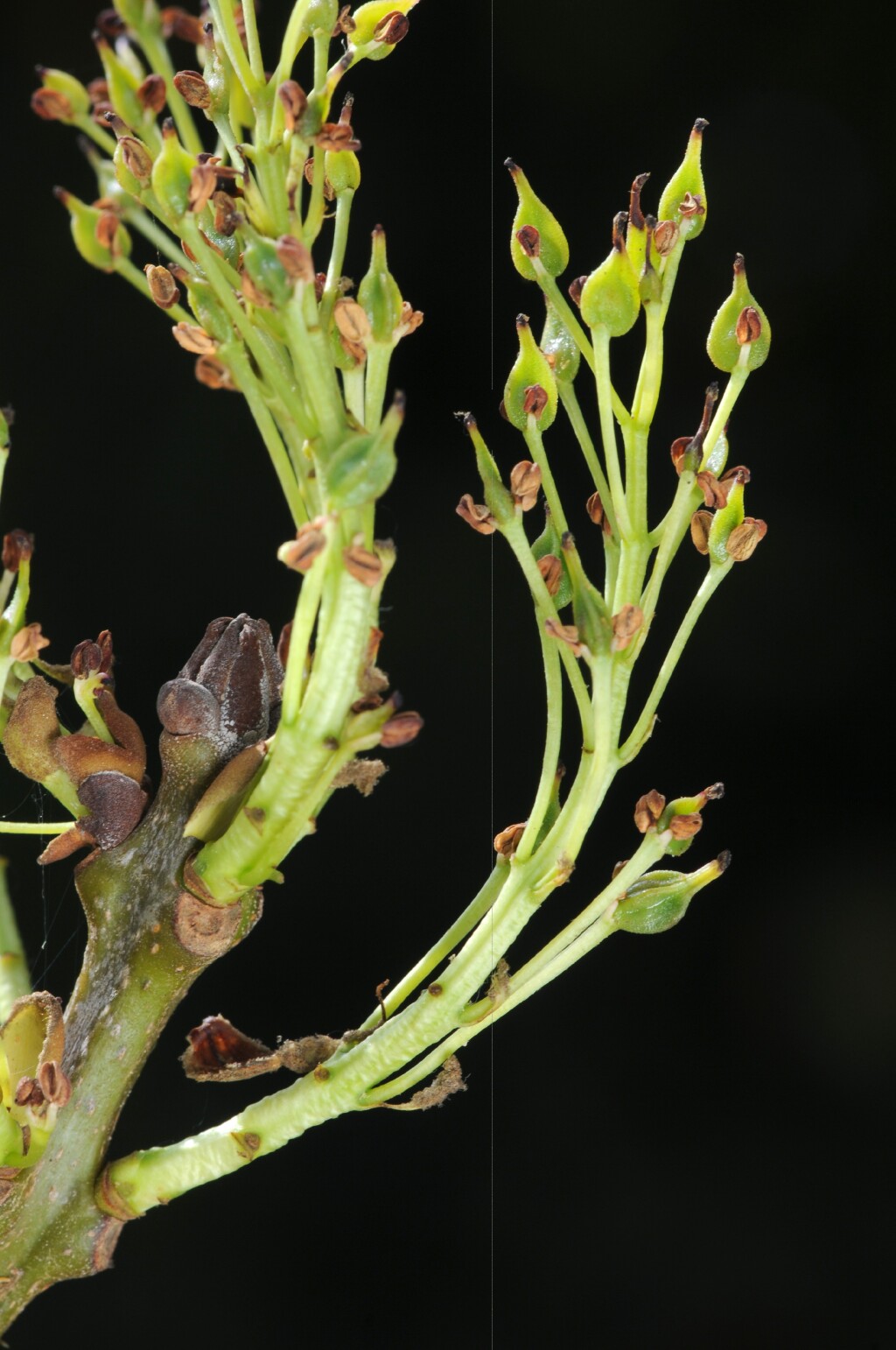Oleaceae
Trees, shrubs or climbers, evergreen or deciduous. Leaves opposite or rarely alternate, simple or pinnately compound, margins entire or toothed, surfaces often with minute peltate scales; stipules absent. Inflorescences axillary or terminal cymes or panicles, sometimes reduced to 1 flower. Flowers actinomorphic, bisexual or unisexual (then plants dioecious), often heterostylous; sepals 4 or 5, united in a tube, lobes rounded, triangular, linear or absent; petals usually 4 or 5(–10 in Jasminum), fused into a tube of varying length, or united in pairs, or absent; stamens 2, rarely 4, inserted on corolla-tube, epipetalous or connecting the petals, anthers 2-celled, dehiscing by longitudinal slits; ovary superior, 2-celled, ovules usually 2 per cell, style single, terminal, long or short, stigma 2-lobed or capitate. Fruit a drupe, berry, samara or capsule; seed often 1, with or without endosperm.
About 29 genera with c. 600 species, cosmopolitan but mainly in eastern and south-eastern Asia; 7 genera (2 naturalized) with c. 30 species in Australia.
The Common Lilac, Syringa vulgaris L., sometimes persists around old gardens by suckering but is apparently not yet truly naturalized in Victoria. This eastern European shrub or small tree to 6 m high has glabrous ovate leaves that are truncate to subcordate at the base and acuminate at the apex. The panicles of fragrant, lilac or white (var. alba) tubular flowers with spreading corolla-lobes are usually borne in pairs at the ends of shoots.
Jeanes, J.A. (1999). Oleaceae. In: Walsh, N.G.; Entwisle, T.J., Flora of Victoria Vol. 4, Cornaceae to Asteraceae, pp. 477–483. Inkata Press, Melbourne.
 Spinning
Spinning


